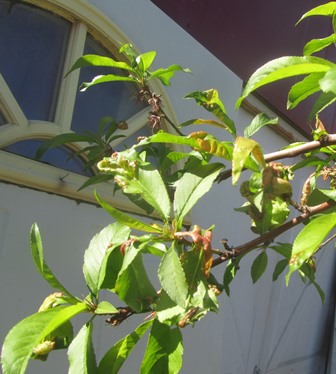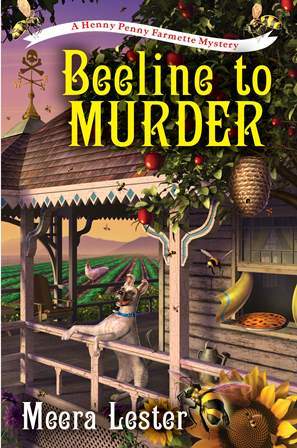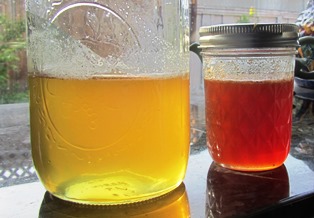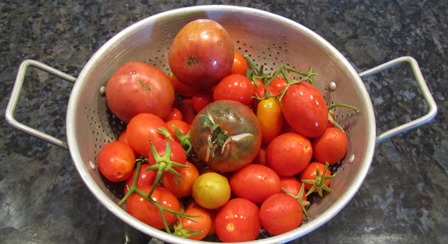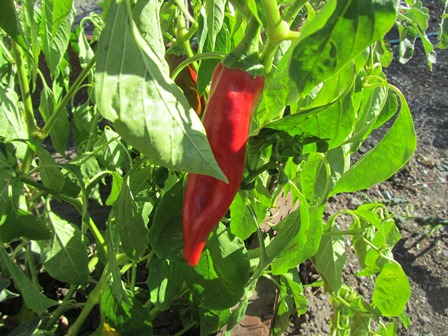Archive for February, 2016
The Challenge of Dealing with Peach Leaf Curl
The rains have turned Northern California hills and fields green with wild grasses and weeds. On my farmette, the fruit trees are blooming and the peaches have leafed out. The dreaded peach leaf curl is apparent on many leaves of my peach and nectarine trees.
The peach leaf curl disease is caused by a fungus, Taphrina deformans, according the integrated pest management information posted on the U.C. Davis site: http://www.ipm.ucdavis.edu/PMG/PESTNOTES/pn7426.html. This fungal infection can involve virtually every part of the tree, especially the new leaves, young twigs, new shoots, and fruits. It winters over, too, ready to infect the new growth in the spring.
Picking off the affected leaves and disposing of them in a garbage bag (never in the compost pile) seems intuitive as new the tree will produce new leaves. However, until it does, the tree is exposed to sunburn.
Many expert gardeners say the most effective treatment is prune in the fall to remove any affected branches and twigs. Spray the tree with a fixed copper fungicide after the leaves have fallen in November.
If the winter rains are heavy, you may need another round of spraying in the spring before the blossoms open. Failure to control this fungus can result in the decline of the of quality fruit and ultimately the death of the tree.
Copper fungicide, like any pesticide, is a poison. If you decide to use it, follow the directions on the packaging. Do not spray on a windy day or where the possibility of the spray can drift and contaminate areas where vegetables are ready to be picked.
Organic approaches are less effective but include the following:
1. Keep the plant healthy, but don’t over-fertilize it because that produces more tissue for potential infection.
2. Use good hygiene on and around the tree. Remove diseased leaves, twigs, and fallen leaves and discard (not in the compost pile).
3. Consider replacing the susceptible tree with a peach tree that is more resistant to peach leaf curl such as Redhaven or cultivars of Redhaven.
4. If you defoliate the tree, allow it to re-foliate in warm, dry weather when re-infection is less of a problem. Also thin the fruit crop in a season when there is a particularly severe infection because that will help keep the plant vigorous.
For more tips for farming, gardening, keeping bees and chickens, check out my Henny Penny Farmette series of cozy mysteries. Each chapter features almanac sayings and ends with farming tips or delicious recipes. The books are available through Amazon.com, Barnesandnoble.com, as well as other online and conventional bookstores everywhere.
Preparing Honeybee Hives for Spring
Recently, I conducted a mid-winter check of my honeybee hives. With my beekeeper neighbor’s help, we opened my Henny Penny Farmette Hives A and B to search for signs of an increase in the mite population, the presence of other pests, and evidence of mold. Inspecting and treating bees with medicines when necessary are important bee management practices.
We found one bug that I couldn’t identify but my neighbor explained it lays a narrow worm and must be removed before its numbers increase. This we did. We also found three frames in Hive B that had a few spots of mold. We threw away the frames and replaced them with wax-covered frames in the lower hive box where the queen had already produced lots of bee babies.
There appeared to be adequate stores of honey, baby bee food, and lots of baby bees. In fact, we removed a few frames of honey from both hives. In their place, we inserted frames that previously had the honey drained off but wax left intact (these I always freeze before putting back into hives since freezing kills mites, larvae, and wax moth), making it easier for the bees to start building comb.
The honey I harvested is dark-colored and earthy tasting, typical of autumn honey when the bees collect pollen from eucalyptus, star thistle, and other sources available in autumn. In contrast, spring honey is light-colored and slightly citrus tasting from pollen gathered from blooming citrus trees and wildflowers.
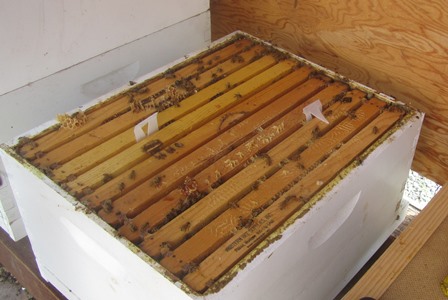
Hang medicated miticide strips between frames inward from the edge of the hive box for mite control.
Since we found evidence of mites, we hung miticide strips between frames to combat tracheal and Varroa mites. Also, we sprinkled powdered sugar medicine (Tetra-Bee Mix 2X Medicated) over the frames to control risk of American foulbrood. Treating the hives thus will enable the bees to remain robust. I expect their numbers to swell with warmer weather which, in turn, translates to new swarms in the spring.
*Apivar is an effective treatment of Varroa mites. One strip per four to five frames works through contact and should be placed in high bee activity areas. Not to be used when honey supers (top hive boxes with frames of honey) are on.
*Tetra-Bee Mix 2 X Medicated is recommended for control of American foulbrood caused by paenibacillus larvae and European foulbrood caused by streptococcus pluton susceptible to oxytetracycline in bees when used as directed.
For more beekeeping tips, delicious recipes, and a wholesome whodunnit, check out my Henny Penny Farmette cozy mysteries: A BEELINE TO MURDER (paperback release in October 2016), MURDER OF A QUEEN BEE (hardcover October 2016), and HIVE OF HOMICIDES (October 2017). Find them on Amazon.com, Barnesandnoble.com and other online and conventional bookstores everywhere.
Coming Soon . . . Murder of a Queen Bee
Fans of my Henny Penny Farmette cozy mysteries (novels with no gratuitous sex, violence, or profanity but each with a terrific puzzle to solve) seem to enjoy the farmette milieu. The second novel in the series includes a roller-coaster ride of a story with all new farmer almanac sayings, chicken and beekeeping tips, and delicious recipes.
A BRIEF SYNOPSIS OF THE STORY
Abigail Mackenzie—a former cop and owner of a run-down farmette where she keeps chickens and bees—has planned the perfect English garden party to honor her friend and herbalist Fiona Mary Sullivan. Abby can’t wait for Fiona to see their handiwork–a medieval herb garden they planted based on a design from an old gardening book. However, a series of unfortunate events—one involving hundreds of dead honeybees in front of Abby’s hives—threaten to ruin the party. The situation goes from bad to worse when free-spirited Fiona is a no-show.
Calls to Fiona’s shop—Ancient Wisdom Botanicals—and her mountain cottage go unanswered. Hours pass, stomachs growl, tempers flare, and Fiona’s whereabouts remains a mystery. Then the unthinkable happens: the police find a woman’s body inside a burning car near Kilbride Lake, located on the mountainous western side of town. When the victim is identified as Fiona, Abby worries about a killer on the loose.
Although the police are on the case, it takes little persuading by the victim’s handsome brother Jack Sullivan (an ethnobotanist with a wicked sense of humor and family roots in Ireland) to convince Abby to undertake an independent investigation . . . and he’ll help.
Complicating Abby’s life is the return of Clay Calhoun, an old boyfriend who’d abandoned their relationship on Valentine’s Day more than a year earlier. Working Fiona’s case not only gives Abby time away from her farmette to re-think her relationship with Clay but also the opportunity to learn more about her free-spirited friend Fiona and her attractive brother Jack. All the while, she is turning up the heat on some unusual suspects. When the killer strikes at Abby, she isn’t wearing her protective beekeeper’s suit, but that doesn’t mean she isn’t ready to do battle.
The book can be pre-ordered from Amazon.com at http://tinyurl.com/zl67lmm as well as other online bookstores; it will be available in brick-and-mortar stores in October 2016.
Finding Treasures in the Seed Catalogs
As a member of the grow-your-own-food movement, I pore over seed catalogs this time of year to search for heirloom vegetables that I want to grow on my farmette. If you’ve ever been inspired by the heirlooms (and not just tomatoes) displayed at a farmer’s market, you know what I mean.
Some wonderful heirlooms have fallen out of favor over the years and through generations. That’s a shame for those of us interested in maintaining the widest possible plant diversity. Gardeners often can find lots of heirloom tomatoes such as Cherokee Purple, Brandywine, Mortgage Lifter, and the “blue” tomatoes, including Indigo Apple. However, finding a great variety of heirloom vegetable seedlings might not be as easy as locating the tomatoes. That’s where rare seeds come in to play.
Seed companies that offer myriad heirloom varieties of vegetables and herbs send out their catalogs around mid-January each year. But their seed offerings can be perused and purchased online as well. Some of my favorite seed companies and their websites include:
Territorial Seed Company, http://www.territorialseed.com/
Baker Creek Heirloom Seeds, http://www.rareseeds.com/
Heirloom Seeds, http://heirloomseeds.com
Sustainable Seed Company, http://sustainableseedco.com/
Annie’s Heirloom Seeds, http://www.anniesheirloomseeds.com/
High Mowing Organic Seeds, http://www.highmowingseeds.com/
Eden Brothers Seed,nhttp://www.edenbrothers.com/store/heirloom_seeds.htm
Victory Seeds,http://www.victoryseeds.com/main_vegies.html
I’ve already removed empty cell packs, potting soil, and ice cream sticks(for plant labels) and placed them on the patio in preparation for starting my own seedlings from seed.
Once the seeds are planted in the cells, I’ll nurture along the seedlings until they are ready to go in the garden (after all chance of frost has passed). Then, Mother Nature will take over. I’ll enjoy sampling new varieties and saving seeds from those I want to grow again.
 Facebook
Facebook Goodreads
Goodreads LinkedIn
LinkedIn Meera Lester
Meera Lester Twitter
Twitter




